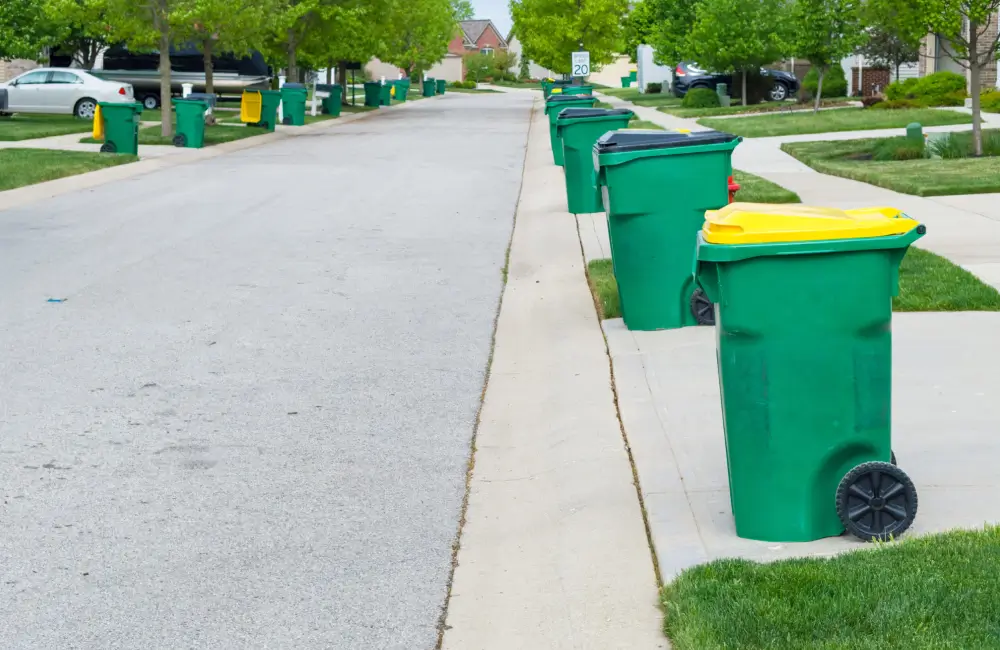Mold is a common problem in many residences, especially in damp and poorly aired places. While most people associate mold with basements, bathrooms, and kitchens, garages are also ideal environments for mold formation. This article will examine the risk of mold in the garage, the reasons for mold growth, how to identify and prevent mold, and how to remove it if it already exists.
Understanding Mold
Mold is a fungus that grows in a damp environment. It reproduces by releasing spores into the air, which can settle on surfaces and grow if the conditions are perfect. Mold can come in various colors, including black, white, green, and orange. While some molds are harmless, some can cause significant health problems and structural damage to buildings.
Types of Mold
- Allergenic Molds: These molds cause allergies and respiratory problems, although they are usually not life-threatening. Examples include Cladosporium, Penicillium, and Aspergillus.
- Pathogenic Molds: These molds can cause infections, especially in those with compromised immune systems. Examples are Aspergillus fumigatus and Histoplasma.
- Toxigenic Molds: These molds create toxic compounds known as mycotoxins, which can cause serious health problems. Stachybotrys chartarum, or black mold, is a well-known toxic mold.
Why Garages Are Prone to Mold
Several factors contribute to the sensitivity of garages to mold growth:
Poor Ventilation
Garages often need more ventilation than other areas of the house. A lack of airflow can increase humidity, making mold development ideal.
Moisture Sources
Water can enter a garage from roof, walls, or base leaks. Furthermore, garages often include objects that can introduce moisture, such as wet cars, snow-covered tools, or damp gardening equipment.
Temperature Fluctuations
Garages are typically not temperature-controlled, resulting in large fluctuations. These changes can generate moisture on surfaces, which promotes mold growth.
Storage of Organic Materials
Garages often store organic materials like cardboard boxes, wood, and fabric, which mold can feed on.
Health Risks Associated with Mold
Mold detection can cause various health problems, depending on the mold type and the exposure’s strength.
Allergic Reactions
Some of the most common mold allergy symptoms are sneezing, coughing, runny nose, itchy eyes, and skin rashes. Individuals with asthma may suffer untreatable symptoms.
Respiratory Issues
Ongoing exposure to mold spores can cause respiratory issues like wheezing, shortness of breath, and lung infections. People with chronic respiratory disorders are more at risk.
Toxic Reactions
Toxigenic molds create mycotoxins, which can induce neurological disorders, immune system suppression, and, in severe cases, death. Mycotoxin-related symptoms include fatigue, headaches, dizziness, and memory loss.
Structural Damage Caused by Mold
In addition to health issues, mold can cause significant structural damage to your garage.
Wood Decay
Mold may decompose wooden constructions, reducing the strength of beams, support, and other wooden components.
Insulation Damage
Mold can grow on and within insulating materials, lessen their efficacy, and drive up energy expenses.
Corrosion of Metal
Mold does not corrode metal, but it can create conditions that promote rust and corrosion, causing damage to tools, equipment, and structural elements.
Identifying Mold in Your Garage
Early diagnosis of mold is crucial for avoiding substantial damage and health problems. Here are several indicators to watch for:
Visible Growth
Mold typically appears as discolored patches on walls, ceilings, floors, and other surfaces. It may be black, green, white, or even orange.
Moldy Odor
A musty or earthy smell in your garage is a strong indicator of mold presence.
Water Damage
Look for water damage indicators, such as stains, peeling paint, or bent materials, as these can indicate where mold is forming.
Health Symptoms
If you or your family members experience unspecified allergic reactions or respiratory issues, mold could be the suspect.
Preventing Mold Growth in the Garage
Prevention is the best strategy to deal with mold. Here are some steps to keep your garage mold-free:
Improve Ventilation
Ensure that your garage has proper ventilation. Installing exhaust fans or vents might reduce humidity.
Control Moisture
Address any sources of moisture immediately. Repair any leaks in the roof, walls, or foundation and ensure suitable drainage around the garage. Use a dehumidifier if necessary.
Insulate and Seal
Insulate your garage to help decrease temperature changes and humidity. Seal any gaps or cracks to keep water out.
Use Mold-Resistant Materials
Consider installing mold-resistant paint, drywall, and insulation in your garage.
Regular Cleaning
Keep the garage clean and dry. Regularly clean and check stored objects, and avoid storing damp items.
Removing Mold from Your Garage
If you already have mold in your garage, you must remove it securely and properly.
Safety Precautions
Wear protective clothing such as gloves, goggles, and a mask to avoid direct contact with mold and inhaling spores.
Cleaning Small Areas
For small mold infestations, you can scrub the affected areas with water and detergent. Rinse thoroughly and dry completely.
Using Mold Removers
Commercial mold removers or a bleach-water mix (1 cup bleach to 1-gallon water) can be successful. Apply the solution, allow it to soak for 15 minutes, then scrub and rinse.
Professional Help
Expert mold cleanup services are recommended for significant infestations or toxic mold. Bin Blasters has the knowledge and tools to handle mold safely and properly.

FAQs
What Causes Mold to Grow in the Garage?
Mold growth in the garage is usually caused by water from leaks, condensation, or damp goods, combined with poor ventilation and temperature variations.
Can Mold in the Garage Affect My Health?
Yes, mold in the garage can emit spores into the air, causing allergic reactions, respiratory troubles, and, in the case of toxic molds, more severe health problems.
How Can I Prevent Mold in My Garage?
To avoid mold growth, enhance ventilation, control moisture, insulate and seal the garage, use mold-resistant materials, and keep it clean and dry.
Is It Safe to Remove Mold Myself?
Small mold infestations can be removed using safety gear and appropriate cleaning solutions. However, for significant infestations or hazardous molds, professional assistance is advised.
How Long Does It Take for Mold to Grow?
Mold can start growing within 24 to 48 hours of the right conditions of moisture and warmth. Therefore, it’s crucial to address moisture issues immediately to prevent mold growth.
Conclusion
Mold in the garage is a serious issue that can cause health problems and structural damage. Understanding the reasons for this and implementing preventive actions will help you keep mold out of your garage. Regular inspections and fast intervention at the first indication of mold can help you avoid more severe problems. If you are dealing with a significant mold problem, do not hesitate to seek professional assistance to protect your safety and the integrity of your garage. Let’s eliminate black mold in your trash can or garage with the help of professionals at Bin Blasters, who use advanced mold cleaning techniques to ensure a spotless and sanitary environment.

